WHO Global Report on Trends in Tobacco Use (2000–2024) and Projections (2025–2030)
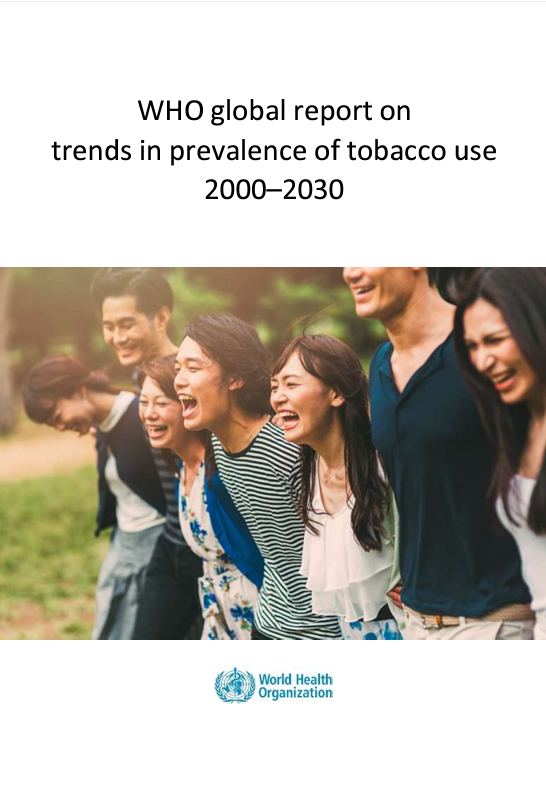
- 09 Oct 2025
In News:
The World Health Organization (WHO) released its latest report on global tobacco use, covering trends from 2000 to 2024 and projecting patterns through 2030. The report provides insights into the prevalence of tobacco consumption among individuals aged 15 years and above and assesses progress toward global reduction targets.
Global Tobacco Trends
- Declining Prevalence: Adult tobacco use worldwide decreased from 26.2% in 2010 to 19.5% in 2024.
- Continued Burden: Despite progress, approximately 1 in 5 adults still consumes tobacco.
- Rise of E-Cigarettes: Over 100 million people use e-cigarettes globally, introducing new regulatory and public health challenges.
India’s Tobacco Landscape
- Users (2024): Around 243.48 million Indians aged 15 and above consume tobacco.
- Global Ranking: India is the 2nd largest producer (after China) and 2nd largest exporter (after Brazil) of tobacco.
- Progress: India is projected to achieve a 43% reduction in prevalence between 2010–2025, surpassing the WHO’s NCD target of 30% reduction.
Measures to Control Tobacco Use in India
- Cigarettes and Other Tobacco Products Act (COTPA), 2003:
- Prohibits smoking in public areas.
- Bans tobacco advertising.
- Restricts sales to minors.
- Mandates packaging and labeling standards.
- Prohibition of Electronic Cigarettes Act, 2019:Outlaws theproduction, import, sale, and promotion of e-cigarettes and similar devices.
- National Tobacco Control Programme (NTCP, 2007–08):
- Promotes awareness of health risks associated with tobacco.
- Aligns with the WHO Framework Convention on Tobacco Control (FCTC).
- Tobacco-Free Film Rules, 2024:Enforces restrictions on tobacco depiction in films and television content.
- Yellow Line Campaign:Marks 100-yard boundaries around schools to enforce tobacco sales bans.
- Taxation and Pricing:Incremental hikes in excise and GST duties on tobacco products, though experts suggest further increases to maximize impact.
About Tobacco (Nicotiana tabacum)
- Botanical Profile: An annual herbaceous plant, native to tropical/subtropical South America, widely cultivated globally.
- Cultivation Requirements:
- Frost-free period of 90–120 days.
- Optimal temperature: 20–30°C.
- Rainfall: Minimum 500 mm; thrives in well-drained sandy loam or alluvial soils.
- Nicotine Content: All parts (except seeds) contain nicotine (2–8%), predominantly concentrated in the leaves (~64% of total plant nicotine).
Significance
The WHO report highlights that while tobacco use is declining globally, substantial public health efforts are still needed, particularly in regulating emerging products like e-cigarettes. India’s multi-pronged approach—legal frameworks, awareness campaigns, taxation, and innovative interventions—demonstrates a strong commitment to achieving tobacco-free goals by 2025.
Who is an ‘Ordinarily Resident’?
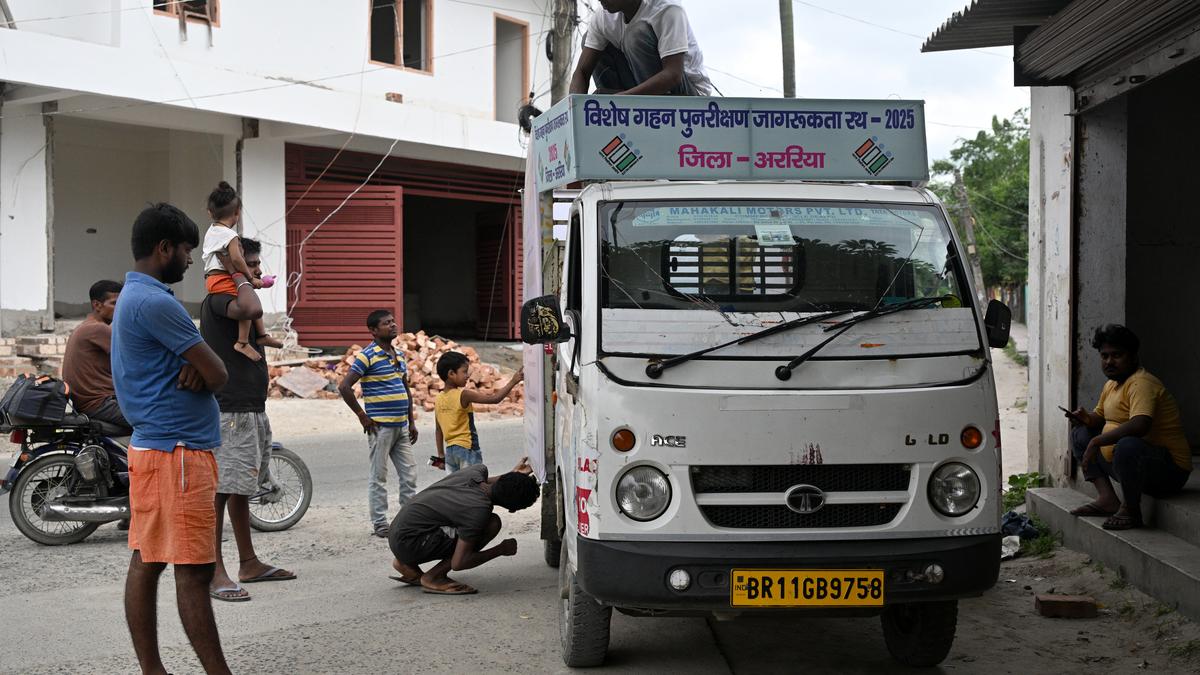
- 16 Jul 2025
In News:
The Election Commission of India (ECI) has initiated a Special Intensive Revision (SIR) of electoral rolls in Bihar, sparking debate over the eligibility of migrant workers and the interpretation of ‘ordinarily resident’ under electoral law.
Legal Basis of ‘Ordinarily Resident’
- Representation of the People Act, 1950:
- Section 19: Only persons ordinarily resident in a constituency are eligible for enrolment in its electoral roll.
- Section 20: Defines ‘ordinarily resident’ and clarifies that:
- Ownership or possession of a house alone does not qualify one as ordinarily resident.
- A person temporarily absent from their usual place of residence (due to work, travel, etc.) continues to be ordinarily resident there.
- Certain categories are deemed to be ordinarily resident in their home constituency even if posted elsewhere:
- Members of armed forces,
- State police serving outside their State,
- Central government employees posted abroad,
- Persons holding constitutional offices declared by the President in consultation with the ECI,
- Their spouses are also covered.
- Section 20A (added in 2010):
- Allows Non-Resident Indians (NRIs) to register and vote from the address mentioned in their passport, even if they reside abroad long-term.
Rules Governing Electoral Rolls
- The Registration of Electors Rules, 1960 (RER):
- Notified by the Central Government in consultation with the ECI.
- Govern the preparation, revision, and correction of electoral rolls.
- Electoral Registration Officers apply and verify the concept of ‘ordinarily resident’ during the enrolment process.
Judicial Interpretation
- Gauhati High Court (Manmohan Singh Case, 1999):
- Defined ‘ordinarily resident’ as one who is habitually and permanently living in a place.
- The person must intend to reside there, and society must reasonably accept them as a resident.
Neglected Tropical Diseases (NTDs)
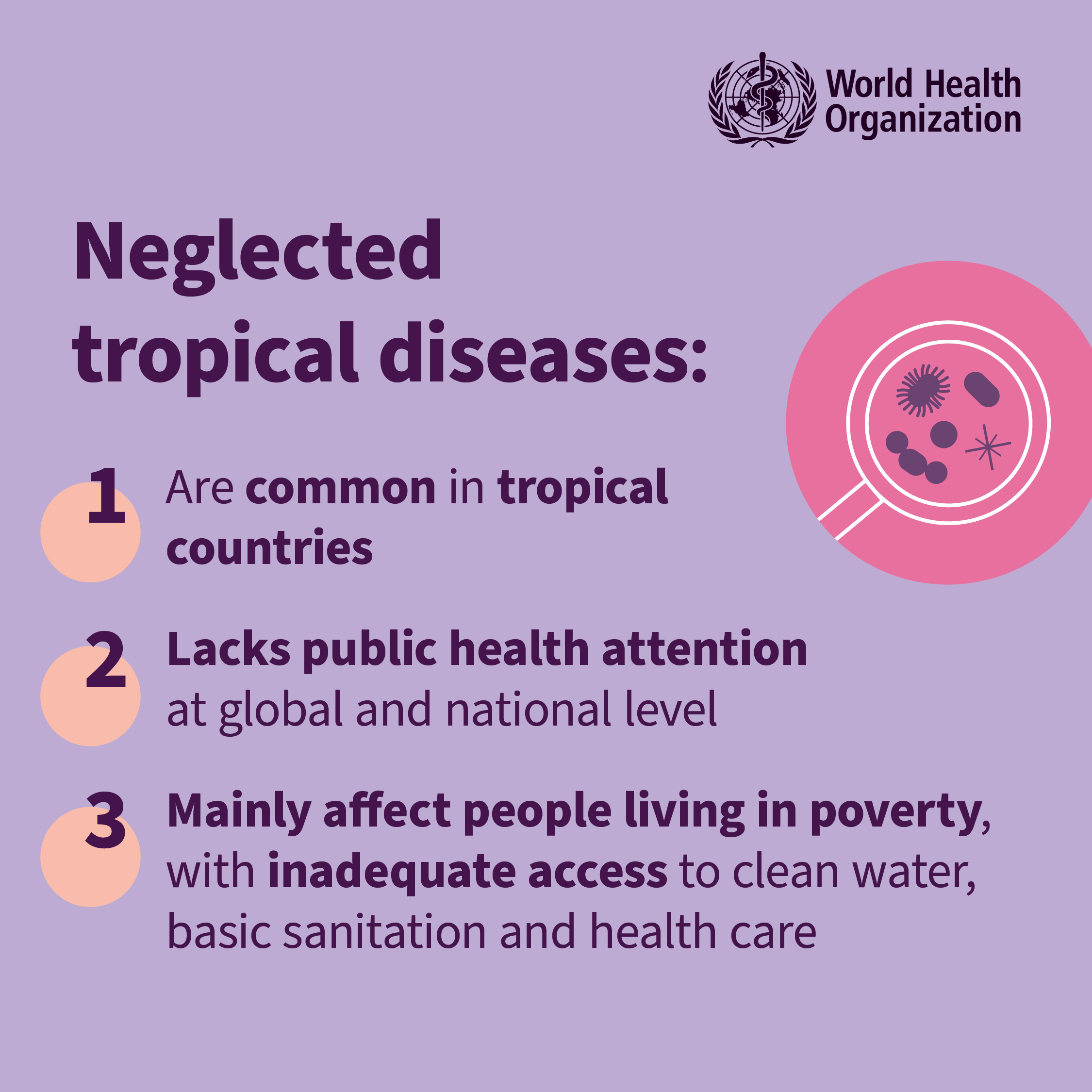
- 10 Jun 2025
In News:
Current Global Progress
- As of May 2025, 56 countries have eliminated at least one NTD, aligned with WHO’s 2030 target (100 countries).
- Between Jan 2023 – May 2025, 17 countries were officially acknowledged by WHO for NTD elimination.
- World NTD Day: Observed annually on 30th January.
What Are NTDs?
- NTDs are a group of infectious diseases affecting over 1 billion people, mainly in tropical and poor regions.
- Caused by parasites, bacteria, viruses, fungi, or toxins.
- Common NTDs include:
- Lymphatic Filariasis (Elephantiasis)
- Onchocerciasis (River Blindness)
- Schistosomiasis
- Soil-transmitted helminths
- Trachoma, Dengue, Kala-azar (Visceral Leishmaniasis)
Impact of Official Development Assistance (ODA) Cuts
- Major donors like the US and UK have withdrawn NTD funding:
- USAID previously provided US$ 1.4 billion, supporting 3.3 billion treatments across 26 countries, helping 14 of them eliminate at least one NTD.
- UK ended its ‘Ascend’ NTD programme in 2021.
WHO Warning:
- On 10 April 2025, WHO cautioned that over 70% of country offices reported health service disruptions due to ODA cuts.
- NTD services have been disrupted at levels similar to peak COVID-19.
Climate Change & Emerging Threats
- Climate change is worsening the NTD burden:
- Dengue declared a Grade 3 Emergency in 2024:
- 14 million cases, 10,000 deaths across 107 countries.
- Geographical expansion of vector-borne NTDs continues.
- Dengue declared a Grade 3 Emergency in 2024:
Public-Private Partnerships
- Pharma companies have donated US$ 12 billion+ worth of drugs (2011–2025), including: GSK, Pfizer, Sanofi, Merck, Bayer, Novartis, Johnson & Johnson, among others.
Recent Global Action
- At the 78th World Health Assembly (May 2025):
- Two NTD-related resolutions adopted:
- Eradication of Dracunculiasis (Guinea Worm)
- Control of Skin-related NTDs
- Two NTD-related resolutions adopted:
Way Forward
- Strengthen nationally owned, sustainable NTD programmes.
- Ensure alternative funding and service delivery mechanisms.
- Prevent reversal of hard-won gains and protect vulnerable communities from deeper health inequities.
Onchocerciasis
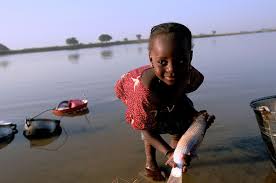
- 03 Feb 2025
In News:
The World Health Organization (WHO) officially verified Niger as the first country in the African Region and the fifth globally to eliminate onchocerciasis (river blindness) by interrupting the transmission of the parasite Onchocerca volvulus.
What is Onchocerciasis (River Blindness)?
- A parasitic disease caused by the worm Onchocerca volvulus.
- Transmitted by infective blackflies, primarily found in riverine areas.
- Causes severe itching, disfiguring skin conditions, and irreversible blindness.
- It is the second leading infectious cause of blindness globally (after trachoma).
- Predominantly affects rural populations in sub-Saharan Africa, Yemen, and parts of Latin America.
Niger’s Elimination Strategy and Achievements:
Historical Background:
- 1976–1989: Under the WHO Onchocerciasis Control Programme (OCP), Niger used vector control via insecticide spraying, reducing disease transmission.
- 2008–2019: Mass Drug Administration (MDA) with ivermectin and albendazole was carried out, primarily for lymphatic filariasis (LF), but also effectively interrupted onchocerciasis transmission in co-endemic areas.
Assessment and Surveillance:
- 2014: Niger began preliminary assessments following the end of LF MDA.
- Entomological and epidemiological surveys confirmed disease elimination:
- Prevalence dropped from 60% to 0.02%.
- No ongoing transmission of O. volvulus.
Key Contributors to Success:
- Partnerships: Collaborative efforts between the Government of Niger, WHO, Merck Sharpe & Dohme (MSD), and various NGOs.
- Medicine Donation: MSD’s donation of ivermectin.
- Surveillance & Flexibility: Continuous monitoring allowed strategic adaptation.
- Previous Success: Niger was certified free of Guinea-worm disease in 2013.
Global and Regional Significance:
- Niger becomes the fifth country globally to eliminate onchocerciasis:
- Other four countries:
- Colombia (2013)
- Ecuador (2014)
- Mexico (2015)
- Guatemala (2016) (All from the WHO Region of the Americas)
- Other four countries:
- WHO African Region:
- 21 countries have eliminated at least one Neglected Tropical Disease (NTD).
- Onchocerciasis is the second NTD eliminated in Niger after Guinea-worm.
WHO Guidelines on Lower-Sodium Salt Substitutes (LSSS)
- 30 Jan 2025
In News:
Recently, the World Health Organization (WHO) issued new guidelines promoting the use of Lower-Sodium Salt Substitutes (LSSS) to tackle the global burden of hypertension, cardiovascular diseases (CVDs), and stroke, which are largely driven by excessive sodium consumption. This is especially relevant for countries like India, with a high prevalence of high blood pressure and salt consumption.
What Are Lower-Sodium Salt Substitutes (LSSS)?
- LSSS are alternatives to regular table salt, where sodium chloride (NaCl) is partially replaced by potassium chloride (KCl), magnesium sulphate, or calcium chloride.
- They are designed to retain the taste of regular salt while significantly reducing sodium intake and improving heart health.
- LSSS can help lower blood pressure, thanks to the potassium content, which helps balance fluid levels and offset sodium’s harmful effects.
Key WHO Recommendations:
- Daily sodium intake should be restricted to less than 2 grams per day, equivalent to about 5 grams of salt.
- Avoid regular table salt, and replace it, wherever safe, with LSSS for household use.
- LSSS use is not recommended for:
- Pregnant women
- Children
- Individuals with kidney impairments or those requiring low-potassium diets
- The guidelines do not apply to packaged or restaurant foods, which are major contributors to overall sodium intake.
Why Is This Important or India?
- Salt Intake in India: Average salt consumption is 10.4 grams/day, over double the WHO recommendation.
- Hypertension Prevalence: Over 35.5% of India’s population (approx. 315 million people) suffers from hypertension (INDIAB Study).
- CVD Burden: Cardiovascular diseases accounted for 28.1% of all deaths in India (2016) – Global Burden of Disease Study.
- Dietary Impact: Globally, 8 million deaths annually are diet-related, with 1.9 million directly linked to high sodium intake.
Implementation and Policy Measures:
- India’s Response:
- The Food Safety and Standards Authority of India (FSSAI) has initiated sodium reduction policies.
- Edible salt must contain 97% sodium chloride, with anticaking agents limited to 2.2%.
- New labelling norms enforce accurate “low sodium” and “sodium-free” claims.
Public Health and Safety Considerations:
- While LSSS are safe and beneficial for most adults, excess potassium can cause hyperkalemia, especially dangerous for those with kidney disease.
- WHO guidelines aim to maximize benefits and minimize risks by promoting regulated, evidence-based usage.
- Governments, policymakers, and health professionals are urged to integrate LSSS into public health strategies, especially in high-risk populations.
About WHO:
- Established in 1948, the World Health Organization is the UN agency dedicated to promoting global health, preventing disease, and coordinating international health responses.
- It leads efforts for universal health coverage and responds to global health emergencies.
WHO Approves First Mpox Diagnostic Test for Emergency Use
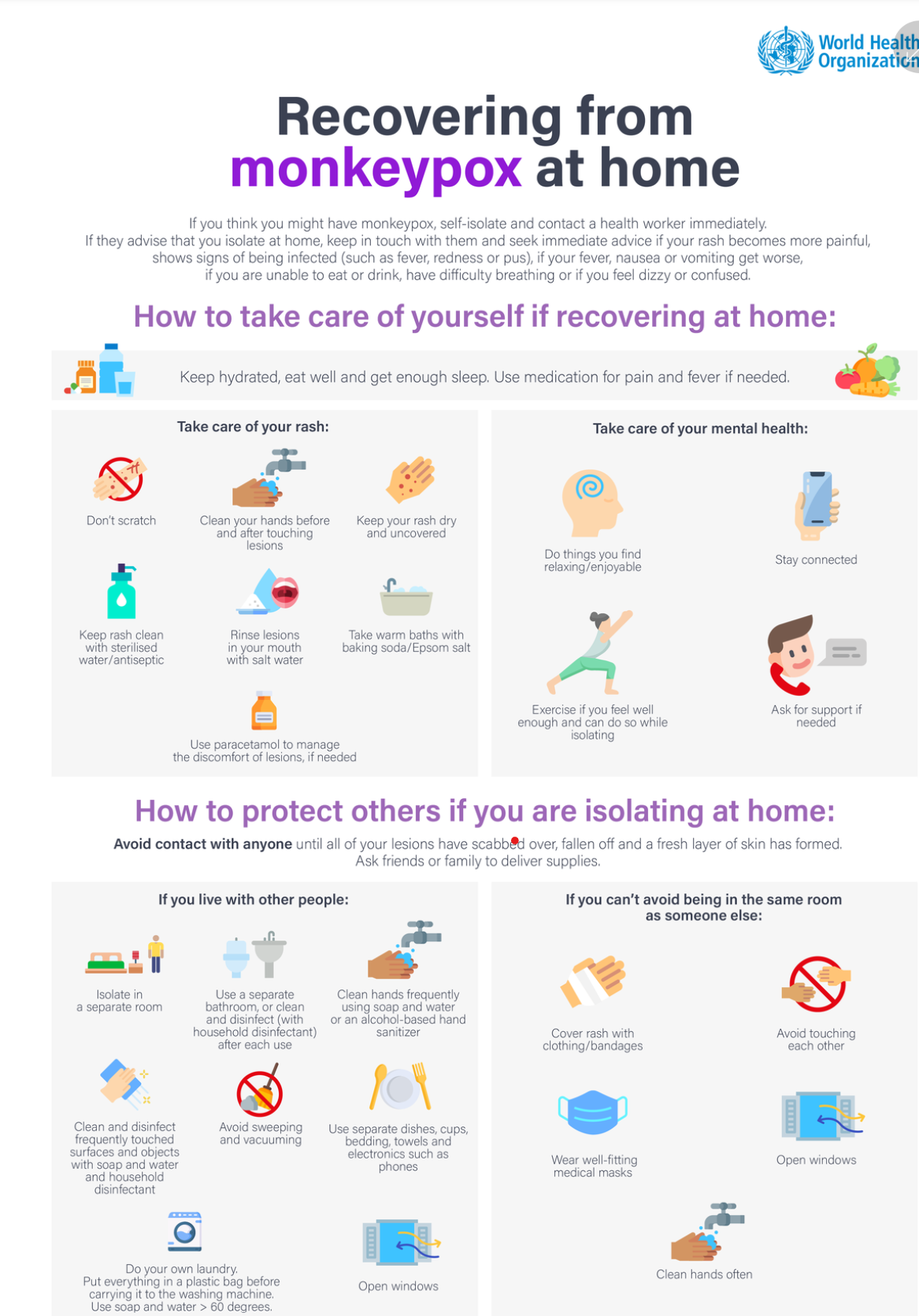
- 21 Oct 2024
In News:
- The World Health Organization (WHO) has listed the Alinity m MPXV Assay under its Emergency Use Listing (EUL) procedure.
- The test, developed by Abbott Molecular Inc., will help expand diagnostic capacity in countries experiencing Mpox outbreaks, particularly in Africa.
- Importance of Early Diagnosis:
- Early diagnosis enables timely treatment and virus control.
- It is critical for improving Mpox surveillance, especially in areas with high transmission.
Current Mpox Situation
- Global Context:
- Over 30,000 suspected cases reported in Africa in 2024.
- India has reported 30 cases since the WHO declared Mpox a global health emergency in August 2024.
- Testing Capacity:
- Limited testing capacity and delays in confirming cases have been a significant barrier to controlling the spread, especially in Africa.
- In India, 35 laboratories are currently equipped to test suspected Mpox cases.
Mpox Diagnostic Test Details
- Alinity m MPXV Assay:
- A real-time PCR test that detects monkeypox virus (MPXV) DNA from skin lesion swabs.
- Used by trained clinical laboratory personnel proficient in PCR techniques.
- Helps confirm suspected Mpox cases from pustular or vesicular rash samples.
- WHO's Role:
- The Emergency Use Listing (EUL) procedure accelerates the availability of life-saving products during public health emergencies.
- WHO aims to increase access to quality-assured diagnostics in regions most affected by Mpox.
About Mpox
- What is Mpox?
- Zoonotic disease caused by the monkeypox virus, part of the Orthopoxvirus genus (family Poxviridae).
- Closely related to smallpox, but generally less severe in humans.
- Transmission:
- Spread via physical contact with infected lesions, body fluids, or contaminated materials.
- Can also spread through animal bites, or activities like hunting, skinning, or eating infected animals.
- Two Clades:
- Clade I: Predominantly in Central and East Africa.
- Clade II: More common in West Africa; linked to the 2022 outbreak.
- Symptoms:
- Rashes, blisters, fever, sore throat, headache, muscle aches, back pain, swollen lymph nodes.
- Lesions typically scab over as they heal.
- Most people experience mild symptoms, but children, pregnant women, and immunocompromised individuals are at greater risk.
Treatment and Prevention
- No Specific Cure:
- Supportive care (e.g., pain relief, hydration) is recommended.
- In some cases, antivirals like tecovirimat (developed for smallpox) may be used under exceptional circumstances.
- Vaccination:
- Three smallpox vaccines are recommended for at-risk individuals: MVA-BN, LC16, and OrthopoxVac.
- Mass vaccination is not recommended by WHO.
WHO Pandemic Treaty
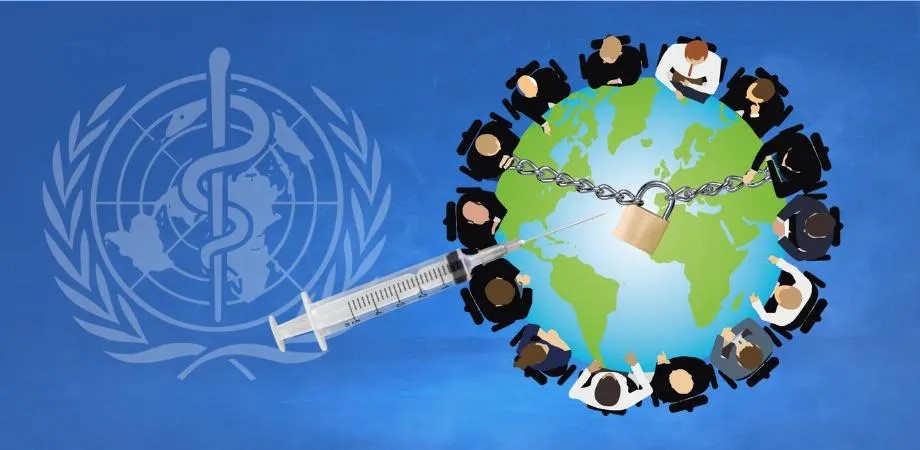
- 27 May 2024
Why is it in the News?
Health officials from the 194 member states of the World Health Organization hope next week to complete more than two years of negotiations on new rules for responding to pandemics when they gather in Geneva.
What is the Pandemic Treaty?
- The "Pandemic Treaty" or "Pandemic Accord" refers to an ongoing process at the World Health Organization (WHO) to negotiate an international agreement or convention on pandemic prevention, preparedness, and response.
- The idea was proposed in late 2020 amid the COVID-19 pandemic to strengthen global coordination and solidarity in addressing future pandemic threats.
- The WHO already has binding rules known as the International Health Regulations (2005) which set out countries’ obligations where public health events have the potential to cross national borders.
- These include advising the WHO immediately of a health emergency and measures on trade and travel.
- Adopted after the 2002/3 SARS outbreak, these regulations are still seen as functional for regional epidemics such as Ebola but inadequate for a global pandemic.
Key points about the proposed Pandemic Treaty/Agreement:
- Objective: To establish a global framework and rules to ensure better cooperation, data sharing, and coordinated response during future pandemics.
- Legal Status: It would be a legally binding international instrument, like a treaty or convention, requiring ratification by WHO member states.
- Core Elements: Likely to include provisions on equitable access to countermeasures, strengthening health systems, information sharing, One Health approach (human-animal-environment interface), and funding mechanisms.
- Negotiation Process: In December 2021, the World Health Assembly established an intergovernmental negotiating body to draft and negotiate the instrument through a member-state-led process.
- The goal is to learn from COVID-19 experiences and create a binding global framework that facilitates a more coherent, better-coordinated international response to potential future pandemic threats.
How will the Global Health Rules change?
- The updates to the International Health Regulations (IHR) include:
- A new alert system to provide different risk assessments for future outbreaks, addressing criticisms that the current system delayed the COVID-19 response.
- Introducing an intermediary alert stage called “early action alert,” in addition to the existing Public Health Emergency of International Concern (PHEIC).
- Considering a “pandemic emergency” designation for the most severe health threats, filling a gap in the current system which does not use the term "pandemic."
- Strengthening state obligations to inform the WHO of public health events, changing the language from “may” to “should.”
How Do Countries View the Pact?
- Negotiations have been marked by significant differences between wealthy and poor countries.
- The talks missed a key May 10 deadline, nearly collapsing and prompting WHO Director-General Tedros to call an emergency meeting to boost morale. Contentious issues include:
- The sharing of drugs and vaccines.
- Financing, with debates over setting up a dedicated fund versus using existing resources like the World Bank’s $1 billion pandemic fund.
- Political pressure, particularly from right-wing groups and politicians concerned about sovereignty, which the WHO denies.
What Happens Next?
- The new IHR rules and the pandemic accord are intended to complement each other, but opinions vary on whether one can exist without the other.
- Sources indicate that IHR negotiations are more advanced and likely to pass, with changes taking effect automatically after 12 months unless countries opt-out.
- In contrast, the pandemic treaty requires ratification, potentially taking years.
B virus

- 17 Apr 2024
Why is it in the News?
A 37-year-old man wounded by a wild monkey in Hong Kong is in intensive care suffering from infection with B virus.
What is B virus?
- B virus, also known as herpes B virus or Macacine herpesvirus 1 (McHV-1), is a type of herpesvirus found in macaque monkeys, particularly rhesus macaques.
- While asymptomatic in these animals, it can cause severe neurological complications, including encephalitis, in humans if transmitted through bites, scratches, or contact with infected bodily fluids.
Is B virus infection fatal??
- B virus infections in humans are rare but potentially fatal, with symptoms ranging from fever and headache to neurological dysfunction and death.
- Of the 50 cases reported in the US, 21 have died.
- Prompt treatment with antiviral medication is essential if exposure to B virus occurs, and preventive measures are crucial for individuals working with or handling macaques.
How does it spread??
- The transmission of this virus among humans is rare.
- So far, only one case of human-to-human transmission has been recorded.
What are the symptoms of B virus infection??
- Disease onset typically occurs within 1 month of exposure, although the actual incubation period can be as short as 3–7 days.
- The common symptoms seen during the infection are:
- Fever, headache, myalgia, and localized neurologic symptoms (e.g., pain, numbness, itching) might occur near the wound site.
- Lymphadenitis, lymphangitis, nausea, vomiting, and abdominal pain also can occur.
Treatment:
- The treatment for B virus includes providing antiviral medications.
Higgs Boson

- 10 Apr 2024
Why is it in the News?
Peter Higgs, the eminent theoretical physicist who first proposed the idea of what we now know as the “Higgs Boson,” died at the age of 94 on April 8.
What is the Higgs Boson?
- Particles make up everything in the universe but they did not have any mass when the universe began.
- They all sped around at the speed of light, according to the European Council for Nuclear Research (CERN).
- CERN, the European Council for Nuclear Research, is where the Large Hadron Collider (LHC) is located, and it's where the discovery of the Higgs Boson was made in 2012 through experiments conducted at the LHC.
- Everything we see like planets, stars, and life, emerged after particles gained their mass from a fundamental field associated with the particle known as the Higgs boson.
- The particle has a mass of 125 billion electron volts making it 130 times bigger than a proton?, according to CERN.
- Interestingly, the subatomic particles known as bosons are named after Indian Physicist Satyendra Nath Bose.
How does the Higgs Boson Work?
- The Higgs boson is a fundamental component of a theory formulated by Higgs and colleagues in the 1960s to elucidate how particles acquire mass.
- According to this theory, a pervasive Higgs energy field permeates the universe.
- As particles traverse this field, they interact with and draw in Higgs bosons, which congregate around the particles in varying quantities.
- Likewise, envision the universe akin to a party: less prominent guests can swiftly traverse the room without notice, while more popular guests attract clusters of people (the Higgs bosons), thus decelerating their movement through the room.
- Similarly, particles navigating the Higgs field experience a comparable phenomenon.
- Certain particles attract larger assemblies of Higgs bosons, and the more Higgs bosons a particle draws in, the greater its mass becomes.
Why is the Higgs Boson Called the “God Particle?”
- The Higgs boson is popularly known as the "God Particle".
- The name originated from Nobel Prize-winning physicist Leon Lederman's book on the particle which he titled the "Goddamn Particle", owing to frustration over how difficult it was to detect.
- However, his publishers changed the name to "The God Particle", which often draws ire from religious communities.
Who was Peter Higgs?
- Born in UK's Newcastle upon Tyne in 1929, Mr Higgs studied at King's College in London and has taught at the University of Edinburgh since the 1950s.
- Described as a modest man who published only a few scientific papers, he disliked his sudden fame calling it "a bit of a nuisance", even cringing when the term "Higgs boson" was used.
- Even as a lifelong atheist, he disliked the name "God particle".
- In 2013, Higgs and Francois Englert won the Physics Nobel Prize for their work on the particle which was thought to be a key to explaining the universe.
CoViNet
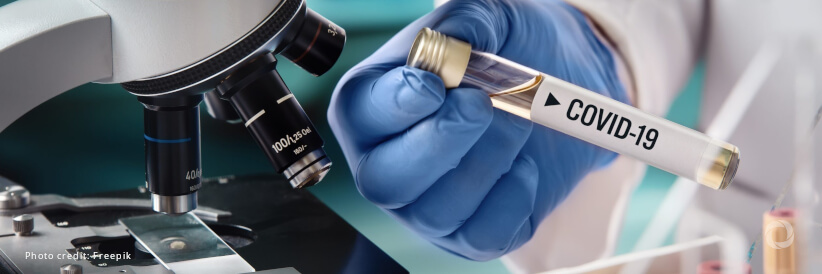
- 29 Mar 2024
Why is it in the News?
The World Health Organization (WHO) has launched a global network of laboratories to identify and monitor potentially novel coronaviruses that could emerge shortly.
What is CoViNet?
- The Coronavirus Network (CoViNet) is a global collaboration of laboratories with expertise in human, animal, and environmental coronavirus surveillance.
- This network aims to identify and monitor potential new coronaviruses that could emerge and impact public health worldwide.
- To enhance pandemic preparedness, CoViNet will expand its scope to include animal health and environmental surveillance, as well as timely risk assessments.
- This will allow the World Health Organization (WHO) to develop more informed policies and protective measures against future viral outbreaks.
- CoViNet will also play a pivotal role in building and supporting laboratory capacities in low- and middle-income countries to monitor MERS-CoV and other emerging coronaviruses of public health importance.
- By fostering knowledge exchange and capacity building, CoViNet aims to strengthen the global response to coronavirus threats.
- Furthermore, data generated through CoViNet's efforts will guide the work of the WHO's Technical Advisory Groups on Viral Evolution (TAG-VE) and Vaccine Composition (TAG-CO-VAC). These groups rely on cutting-edge research and surveillance data to inform public health policies and vaccination strategies.
- With 36 laboratories from 21 countries across all six WHO regions, CoViNet currently encompasses a wide range of expertise and resources.
- Three Indian institutions, namely, the Council of Scientific and Industrial Research-National Environmental Engineering Research Institute, the Indian Council of Medical Research-National Institute of Virology in Pune, and the Translational Health Science and Technology Institute, proudly represent the country in this global network dedicated to coronavirus surveillance and preparedness.
About the World Health Organization (WHO):
- The World Health Organization (WHO) stands as a paramount global health authority, dedicated to promoting health, preventing diseases, and improving healthcare systems worldwide.
- Established in 1948, WHO operates as a specialized agency of the United Nations, with its headquarters in Geneva, Switzerland.
- It collaborates with governments, international organizations, and civil society to address pressing health challenges and provide guidance and support to countries in need.
- WHO's mandate encompasses a wide array of health-related issues, including infectious diseases, non-communicable diseases, mental health, maternal and child health, and environmental health.
- Through research, policy development, and technical assistance, WHO plays a vital role in shaping health policies, setting standards, and coordinating responses to health emergencies such as pandemics and natural disasters.
- With a mission to ensure the highest attainable level of health for all people, WHO continues to lead efforts in global health governance, advocacy, and capacity-building, striving for a healthier, safer, and more equitable world.
WHO launches digital health platform agreed upon in India’s G20 presidency
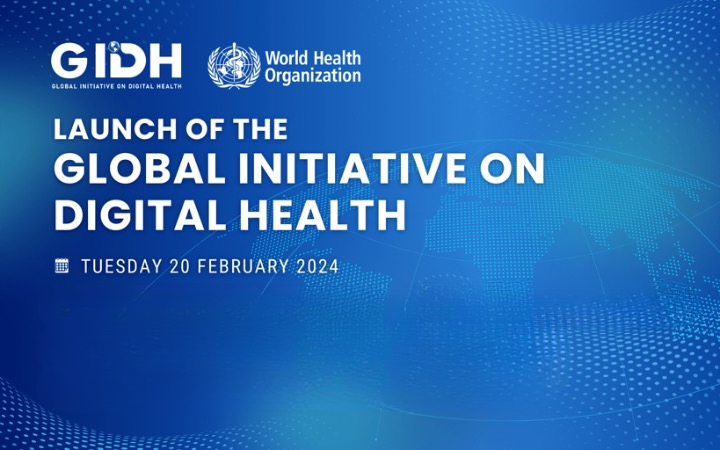
- 21 Feb 2024
Why is it in the News?
Achieving one of the three priority areas agreed upon during India’s G20 presidency in 2023, the World Health Organization (WHO) recently launched the Global Initiative on Digital Health (GIDH) virtually, a platform for sharing knowledge and digital products among countries.
About Global Initiative on Digital Health (GIDH):
- The Global Initiative on Digital Health (GIDH) is a network managed by the World Health Organization (WHO), dedicated to enhancing and coordinating efforts for country-led digital health transformation through collaborative partnerships and knowledge sharing.
- It was launched by the WHO and the Government of India during the G20 Health Ministerial Meeting in Gandhinagar.
- Functioning as a platform for inter-country knowledge exchange and digital product dissemination, GIDH strives to achieve several key objectives through collective action:
- Assess and prioritise countries' requirements for sustainable digital health transformation.
- Enhance the alignment of digital health resources and address unfunded priorities at the country level.
- Facilitate the accelerated attainment of the strategic objectives outlined in the Global Strategy on Digital Health 2020-2025.
- Promote capacity building and synergize efforts to support local development, maintenance, and adaptation of digital health technologies to evolving needs.
- Comprising four primary components, GIDH operates as a network of networks:
- Country Needs Tracker: Tracks and prioritises country-specific digital health requirements.
- Country Resource Portal: Provides a comprehensive map of available digital health resources within each country.
- Transformation Toolbox: Shares quality-assured digital tools to support country-led digital health initiatives.
- Knowledge Exchange: Facilitates the exchange of insights and best practices among member countries.
- GIDH extends support to countries in three fundamental ways:
- By attentively addressing their needs
- By fostering resource alignment to prevent fragmentation, and
- By offering access to quality-assured digital products.
- Membership in GIDH is open to all institutions actively involved in the digital health domain.
What is Digital Health?
- Digital health denotes the utilisation of technology, encompassing mobile devices, software applications, and various digital tools, to enhance health outcomes and streamline healthcare delivery.
- Essentially, it represents an interdisciplinary field at the intersection of technology and healthcare, integrating a diverse array of concepts and innovations.
- This encompasses a broad spectrum of technologies and services, spanning telemedicine, electronic health records, wearable devices, health information exchange, and more.
- Examples of notable digital health initiatives include India’s CoWIN platform and UNICEF's RapidPro and FamilyConnect programs.
- RapidPro, UNICEF’s real-time information platform, serves as a foundational component in its digital health portfolio.
- FamilyConnect, another UNICEF initiative, delivers targeted, lifecycle-based messages via SMS to various recipients, including pregnant women, new mothers, and heads of households.
India Initiatives on Digital Health:
- National Digital Health Mission (NDHM): Designed to establish a comprehensive national digital health ecosystem featuring unique health IDs, electronic health records (EHRs), and a platform for health data exchange.
- Ayushman Bharat Digital Mission (ABDM): Aims to develop a digital infrastructure for the Ayushman Bharat Health Infrastructure Mission (ABHIM), incorporating health registries, electronic claim processing, and telemedicine services.
- E-Sanjeevani Telemedicine Platform: Enables virtual consultations between healthcare providers and patients nationwide, enhancing access to medical care.
- Jan Arogya Setu App and CoWIN Platform: Offers access to healthcare services, facilitates appointment scheduling, and disseminates COVID-19-related information.
- Digital Aarogya Mitra (DAM): Implements a community health worker program utilising technology for data collection and community-based health interventions.
Egypt is Racing to Eliminate Hepatitis C (The Hindu)
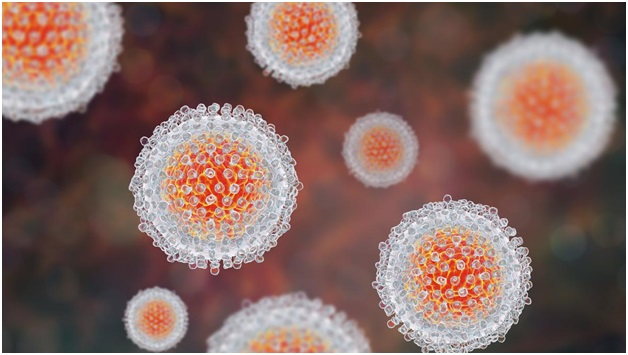
- 14 Oct 2023
Why in the News?
Recently the WHO announced that Egypt had made “unprecedented progress” towards eliminating hepatitis C.
Context:
- As per the World Health Organization (WHO), Egypt has attained a significant milestone by becoming the inaugural country to reach the "gold tier" status in its pursuit of eliminating hepatitis C, meeting the criteria established by the global health organization.
- Egypt has successfully identified 87% of individuals with hepatitis C and has administered curative treatment to 93% of those diagnosed, surpassing the WHO's gold-tier benchmarks.
- These targets include diagnosing a minimum of 80% of individuals with hepatitis C and offering treatment to at least 70% of those identified, marking a commendable achievement for Egypt in the global effort against the disease.
What is Hepatitis C?
- Hepatitis C is a viral infection impacting the liver, causing both acute (short-term) and chronic (long-term) illnesses that can be life-threatening.
- Transmission occurs through contact with infected blood, such as sharing needles, unsafe medical procedures like unscreened blood transfusions, and vertical transmission from an infected mother to her baby.
- It can also be transmitted through certain sexual practices involving blood exposure.
- Contrary to misconceptions, Hepatitis C is not spread through breast milk, food, water, or casual contact like hugging, kissing, or sharing food/drinks with an infected person.
- Symptoms encompass fever, fatigue, loss of appetite, nausea, vomiting, abdominal pain, dark urine, and jaundice (yellowing of the skin or eyes).
- Geographically, this viral infection is present in all WHO regions, with the Eastern Mediterranean Region and European Region bearing the highest disease burden.
- New infections often lack symptoms, making diagnosis challenging, and chronic infections may remain asymptomatic for decades until severe liver damage prompts noticeable symptoms.
- While no vaccine exists for Hepatitis C, antiviral medications offer effective treatment options.
What is Gold Tier Status?
- Gold tier status involves fulfilling distinct criteria, which encompass:
- Guaranteeing 100% blood and injection safety, with a commitment to maintaining a minimum of 150 needles/syringes annually for individuals who inject drugs (PWID).
- Achieving a diagnosis rate of over 80% for individuals living with chronic hepatitis C virus (HCV).
- Providing treatment to over 70% of individuals diagnosed with HCV.
- Instituting a sentinel surveillance program for hepatitis sequelae, with a focus on conditions such as liver cancer.
Tadoba-Andhari Tiger Reserve (TOI)
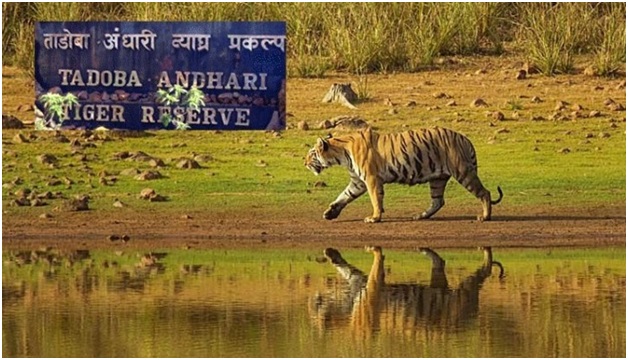
- 15 Nov 2023
Why in the News?
A dominant tiger named Bajrang said to have sired at least 50 cubs during his lifetime, recently died in a territorial fight with another powerful tiger, Chhota Matka, in the Tadoba-Andhari Tiger Reserve (TATR).
About Tadoba Andhari Tiger Reserve:
- Tadoba Andhari Tiger Reserve is the oldest and largest National Park in the Chandrapur district of Maharashtra.
- It is one of India's 47 project tiger reserves existing in India.
- The total area of the tiger reserve is 1,727 Sq.km, which includes the Tadoba National Park, created in the year 1955.
- The Andhari Wildlife Sanctuary was formed in the year 1986 and was amalgamated with the park in 1995 to establish the present Tadoba Andheri Tiger Reserve.
- The word 'Tadoba' is derived from the name of God "Tadoba" or "Taru," which is praised by local tribal people of this region, and "Andhari" is derived from the name of the Andhari river that flows in this area.
- Tadoba is presently home to more than 115 tigers, which is one of the highest in India.
- The vegetation of Tadoba forest is of Southern tropical dry deciduous type and is spread on around 626 sq. km.
- Teak is the prominent tree species in the forest.
- The Tadoba Tiger Reserve is rich in flora and fauna
- Flora: Some of the famous and widely seen flora of this park include Teak, Ain, Bija, Bamboo, Black Plum, and many others.
- Fauna: Tigers, Indian leopards, Sloth bears, Gaur, Nilgai, Striped Hyena, Spotted Deer, Barking Deer, Marsh Crocodile, etc.
What is ‘noma’, the latest addition to WHO’s list of neglected tropical diseases (DownToEarth)

- 18 Dec 2023
Why is it in the News?
The World Health Organization (WHO) on December 15, 2023, added one of the world’s most under-recognised health challenges, noma, to its official list of neglected tropical diseases (NTD).
About the Noma disease:
- Noma is a severe gangrenous disease of the mouth and face with a mortality rate of approximately 90 per cent.
- It is also known as cancrum oris or gangrenous stomatitis and is often associated with extreme poverty, malnutrition and poor access to sanitation and oral hygiene.
- The name of the disease comes from the Greek word “nom?”, meaning “to devour”, as noma eats away facial tissue and bones if not treated early.
- Noma mainly affects children aged 2-6 years old and is found most commonly among those living in poor communities.
- The illness’s ‘hidden’ or neglected nature is most likely due to the fact that it affects the world’s most marginalised children.
- Noma is associated with a number of risk factors, including poor oral hygiene, malnutrition, weakened immune systems, infections, and extreme poverty.
- While the disease is not contagious, it prefers to attack when the body’s defences are weak.
- The NTD often starts as an ulcer on the mucous membrane lining, commonly after a bout of measles or other diseases, stated another 2003 study.
- “It quickly develops into a massive necrosis, moving from the inside outward, often involving major portions of the face.
- Treatment: “Early treatment with antibiotics, rehydration, correction of electrolytic imbalances, and administering nutritional supplements will halt the disease.
- The patients who survive face many consequences, like significant facial disfigurement, spasms of the jaw muscles, oral incontinence and speech problems.
- The disease is also called the ‘face of poverty’, as effective drugs like sulfonamides and penicillin and adequate surgical treatment for the effects remain inaccessible for many due to extreme poverty.
- “The recognition of noma as an NTD aims to amplify global awareness, catalyse research, stimulate funding, and boost efforts to control the disease through multisectoral and multi-pronged approaches.
R21/Matrix-M vaccine (The Hindu)
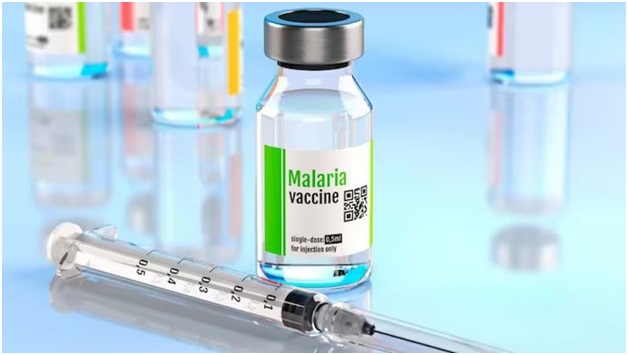
- 04 Oct 2023
Why in the News?
The WHO has given its thumbs-up to the R21 vaccine, the second malaria vaccine they've recommended, following the RTS, S/AS01 vaccine, which got their approval in 2021. Right now, the WHO is closely examining this vaccine for prequalification, which is like their gold seal of approval. Once it's prequalified, organizations like GAVI (a global vaccine alliance) and UNICEF can purchase the vaccine from the manufacturers.
About the R21/Matrix-M Vaccine:
- It's a new vaccine designed to protect children from malaria.
- The University of Oxford and the Serum Institute of India developed it, with support from the European and Developing Countries Clinical Trials Partnership (EDCTP), the Wellcome Trust, and the European Investment Bank (EIB).
- This vaccine is a game-changer as it's the first one to meet the WHO's target of 75% effectiveness.
- Burkina Faso, Ghana, and Nigeria have already given the green light for its use.
- In early 2024, these African countries will start administering the vaccine, and by mid-2024, it will be available in other countries too.
